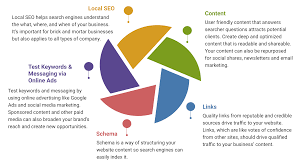Interactive Advertising Campaigns: Enhancing Engagement and Driving Results
In today’s fast-paced digital world, where consumers are constantly bombarded with advertisements, standing out from the crowd is essential for any brand. This is where interactive advertising campaigns come into play, revolutionizing the way businesses connect with their target audience. By combining creativity, technology, and user participation, interactive advertising campaigns have become a powerful tool for enhancing engagement and driving results.
What exactly are interactive advertising campaigns? Simply put, they are marketing initiatives that actively involve consumers in the advertising experience. Instead of passively consuming content, users are encouraged to interact with the brand through various mediums such as quizzes, games, polls, augmented reality (AR), virtual reality (VR), or even social media challenges.
One of the key benefits of interactive advertising campaigns is their ability to capture attention. By offering an immersive and engaging experience, these campaigns break through the clutter and create a lasting impact on consumers’ minds. Whether it’s a captivating game that showcases a brand’s values or an interactive quiz that educates users about its products or services, these campaigns grab attention and leave a memorable impression.
Furthermore, interactive advertising campaigns foster a sense of personal connection between the brand and its audience. By actively involving users in the advertising process, brands can build stronger relationships based on trust and loyalty. When consumers feel like they have participated in creating an advertisement or have had a unique experience with a brand through interactivity, they are more likely to develop positive associations and become advocates for that brand.
Another advantage of interactive advertising campaigns is their ability to gather valuable data about consumers’ preferences and behaviors. Through user interactions such as surveys or quizzes embedded within these campaigns, brands can gain insights into their target audience’s interests, demographics, purchasing habits, and more. This data can then be used to refine marketing strategies and tailor future campaigns to better meet consumer needs.
Moreover, interactive advertising campaigns offer measurable results. By tracking user interactions, brands can analyze campaign performance and make data-driven decisions to optimize their marketing efforts. Metrics such as click-through rates, time spent on interactive elements, social media shares, or conversions provide valuable insights into the effectiveness of these campaigns. This allows brands to refine their strategies and allocate resources more efficiently for maximum impact.
In conclusion, interactive advertising campaigns have become a game-changer in the world of marketing. By actively involving consumers and providing immersive experiences, these campaigns enhance engagement, create memorable brand experiences, and drive results. They offer a unique opportunity for brands to stand out from the competition and build meaningful connections with their target audience. As technology continues to advance, we can expect even more innovative and exciting interactive advertising campaigns that will shape the future of digital marketing.
Commonly Asked Questions about Interactive Advertising Campaigns in English (UK)
- What is interactive advertising with example?
- Are interactive ads effective?
- What are interactive campaigns?
- What is an example of an interactive marketing campaign?
- What are interactive marketing campaigns?
- What are the four types of advertising campaigns?
What is interactive advertising with example?
Interactive advertising refers to marketing initiatives that actively engage consumers and encourage them to participate in the advertising experience. It goes beyond traditional passive advertising methods and involves interactive elements that allow users to interact with the brand or campaign in a meaningful way. Here are a few examples of interactive advertising:
- Gamified Advertisements: Brands create interactive games related to their products or services. For example, a snack company might develop an online game where users can virtually catch falling snacks using their mouse or mobile device’s tilt function.
- Augmented Reality (AR) Campaigns: AR technology overlays digital content onto the real world, allowing users to interact with virtual elements through their smartphones or dedicated devices. For instance, a furniture retailer might offer an AR app that enables users to visualize how different pieces of furniture would look in their own homes.
- Interactive Social Media Campaigns: Brands leverage social media platforms to engage users through interactive content such as quizzes, polls, challenges, or contests. A clothing brand might run a “style challenge” on Instagram where followers can submit photos of themselves wearing the brand’s clothes for a chance to win prizes.
- Interactive Digital Billboards: Digital billboards equipped with sensors can detect user presence and respond accordingly. An example would be a billboard that displays different messages based on the age group of people passing by, effectively targeting different demographics.
- Interactive Video Ads: These ads allow viewers to interact with the content by making choices or exploring additional information within the video itself. For instance, an automobile company may create an interactive video ad where viewers can customize features of a car and see how it would look in different colors and styles.
These examples demonstrate how brands are leveraging interactivity to capture attention, enhance engagement, and create memorable experiences for consumers in today’s digital landscape. Interactive advertising campaigns provide opportunities for brands to connect with their target audience on a deeper level while gathering valuable insights into consumer preferences and behaviors.
Are interactive ads effective?
Yes, interactive ads have proven to be highly effective in engaging audiences and driving results. Here are a few reasons why interactive ads are considered effective:
- Increased Engagement: Interactive ads grab users’ attention and encourage them to actively participate in the advertising experience. By offering an immersive and engaging interaction, these campaigns captivate users and keep them interested for longer periods of time compared to traditional static ads.
- Memorable Brand Experiences: Interactive ads create memorable brand experiences that leave a lasting impression on consumers. When users actively participate in an ad campaign through games, quizzes, or other interactive elements, they are more likely to remember the brand and its message.
- Personal Connection: Interactive ads foster a sense of personal connection between the brand and the audience. By involving users in the advertising process, brands can build stronger relationships based on trust and authenticity. This personal connection enhances brand loyalty and encourages consumers to become advocates for the brand.
- Data Collection: Interactive ads provide valuable data about consumer preferences, behaviors, and interests. Through user interactions such as surveys or quizzes embedded within these campaigns, brands can gather insights that help them better understand their target audience. This data can then be used to refine marketing strategies and tailor future campaigns for maximum effectiveness.
- Measurable Results: Interactive ads offer measurable results that allow brands to analyze campaign performance and make data-driven decisions. Metrics such as click-through rates, time spent on interactive elements, social media shares, or conversions provide valuable insights into the effectiveness of these campaigns. Brands can use this data to optimize their marketing efforts and allocate resources more efficiently.
Overall, interactive ads have proven to be effective in engaging audiences, creating memorable experiences, fostering personal connections with consumers, collecting valuable data, and delivering measurable results for brands. As technology continues to advance, we can expect even more innovative and impactful interactive ad campaigns in the future.
What are interactive campaigns?
Interactive campaigns are marketing initiatives that actively involve consumers in the advertising experience. Unlike traditional advertising where consumers passively consume content, interactive campaigns encourage active participation and engagement. These campaigns utilize various mediums such as quizzes, games, polls, augmented reality (AR), virtual reality (VR), or social media challenges to create an immersive and interactive experience for the audience.
The goal of interactive campaigns is to capture attention, foster a personal connection with the brand, gather valuable data about consumer preferences and behaviors, and ultimately drive results. By offering an engaging and participatory experience, these campaigns aim to leave a lasting impression on consumers’ minds and build stronger relationships based on trust and loyalty.
Interactive campaigns also provide measurable results through tracking user interactions. Brands can analyze metrics such as click-through rates, time spent on interactive elements, social media shares, or conversions to evaluate campaign performance and make data-driven decisions for future optimization.
Overall, interactive campaigns are a powerful tool for brands to break through the clutter of traditional advertising and create meaningful connections with their target audience by actively involving them in the advertising process.
What is an example of an interactive marketing campaign?
One example of an interactive marketing campaign is Coca-Cola’s “Share a Coke” campaign. In this campaign, Coca-Cola replaced its iconic logo on bottles and cans with popular names and phrases. The objective was to encourage consumers to find their own name or the name of a loved one on a Coca-Cola product and share it with others.
This interactive campaign generated significant engagement and social media buzz. Consumers were excited to search for their names or the names of friends and family members, creating a sense of personal connection with the brand. People shared photos of themselves holding their personalized Coca-Cola products on social media platforms, using the hashtag #ShareACoke.
To further enhance interactivity, Coca-Cola also set up kiosks in various locations where people could personalize mini Coke cans with custom labels. This allowed consumers to create unique and memorable experiences while enjoying their favorite beverage.
The “Share a Coke” campaign successfully tapped into the desire for personalization and connection, transforming a simple act of purchasing a drink into a fun and engaging experience. By incorporating user participation and social sharing, Coca-Cola created an interactive marketing campaign that not only increased brand awareness but also fostered emotional connections between consumers and the brand.
What are interactive marketing campaigns?
Interactive marketing campaigns are strategic initiatives that actively engage consumers and encourage them to participate in the marketing experience. Unlike traditional marketing campaigns that rely on one-way communication, interactive marketing campaigns involve two-way interactions between the brand and the target audience.
These campaigns utilize various interactive elements and technologies to capture the attention and interest of consumers. They can take many forms, including quizzes, games, contests, augmented reality (AR), virtual reality (VR), social media challenges, surveys, personalized experiences, and more. The goal is to create a dynamic and immersive experience that encourages users to actively engage with the brand.
The key characteristics of interactive marketing campaigns are:
- Participation: Interactive campaigns require active participation from consumers. They go beyond passive consumption by encouraging users to interact with content or take specific actions.
- Engagement: These campaigns aim to capture and hold consumers’ attention through compelling and captivating experiences. By offering interactive elements, brands can create a deeper connection with their audience.
- Personalization: Interactive campaigns often provide personalized experiences tailored to individual preferences or behaviors. This customization helps create a sense of relevance and increases engagement.
- Data collection: Interactive campaigns allow brands to gather valuable data about their target audience’s preferences, interests, demographics, or purchasing behavior. This data informs future marketing strategies and helps refine targeting efforts.
- Measurable results: Interactive campaigns provide measurable metrics that allow brands to evaluate their success and make data-driven decisions for optimization. Metrics such as click-through rates, conversions, time spent on interactive elements, or social media shares offer insights into campaign performance.
The benefits of interactive marketing campaigns include increased brand awareness, enhanced engagement levels, improved customer relationships, higher conversion rates, and valuable data insights for future marketing efforts.
In summary, interactive marketing campaigns are innovative approaches that actively involve consumers in the advertising process through various interactive elements and technologies. By fostering participation and engagement, these campaigns create memorable experiences while providing brands with valuable data and measurable results.
What are the four types of advertising campaigns?
There are various ways to categorize advertising campaigns, but one commonly used classification includes the following four types:
- Informative Advertising Campaigns: These campaigns focus on providing information about a product, service, or brand to the target audience. The primary goal is to educate consumers about the features, benefits, and value proposition of the offering. Informative campaigns often emphasize facts, statistics, and key messages to establish credibility and create awareness.
- Persuasive Advertising Campaigns: This type of campaign aims to persuade consumers to take a specific action or change their attitudes towards a product or brand. Persuasive campaigns utilize emotional appeals, storytelling techniques, testimonials, and persuasive arguments to influence consumer behavior. The goal is to create desire and convince consumers that the advertised product or service is the best choice for them.
- Reminder Advertising Campaigns: Reminder campaigns are designed to reinforce brand awareness and maintain top-of-mind presence among consumers. These campaigns are typically used for well-established brands with high market share or for products with long purchase cycles. The focus is on reminding consumers about the brand’s existence, reinforcing positive associations, and encouraging repeat purchases.
- Reinforcement Advertising Campaigns: Reinforcement campaigns target existing customers with the aim of strengthening their loyalty and encouraging repeat business. These campaigns often highlight customer testimonials, rewards programs, exclusive offers, or personalized messages to show appreciation for their ongoing support. The goal is to deepen the relationship between the brand and its existing customers while fostering brand advocacy.
It’s important to note that these categories are not mutually exclusive, and many advertising campaigns may incorporate elements from multiple types depending on their objectives and target audience. Successful campaigns often strike a balance between informing consumers about a product’s features, persuading them of its benefits, reminding them of its availability, and reinforcing loyalty among existing customers.



